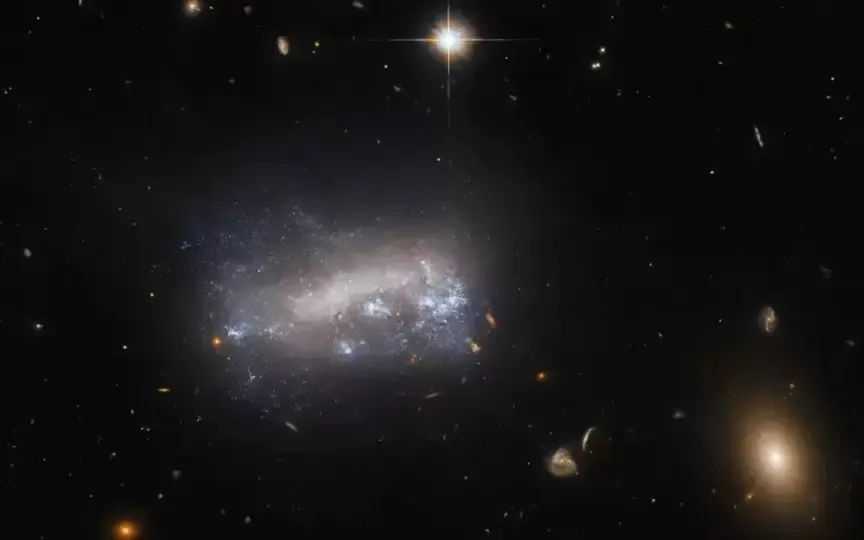NASA releases image taken by Hubble Space Telescope of LEDA 42160 galaxy located 52 million light-years away
Galaxies travel through space, facing incredible obstacles such as ram pressure caused by gas and dust. The Hubble Space Telescope, operated by NASA and ESA, recently captured an image illustrating the impact of this force on the distant galaxy LEDA 42160.
Located about 52 million light-years away in the constellation Virgo, LEDA 42160 is a dwarf galaxy navigating the dense gas of the Virgo cluster. This intergalactic gas creates a pressure known as the piston pressure, which directly affects the star formation processes in LEDA 42160.
Ram pressure can have both positive and negative effects on galaxies. On the other hand, it can strip a galaxy of star-forming gas and dust, preventing new stars from forming. On the other hand, it can also compress gas in the galaxy, which increases star formation.
The observations of LEDA 42160 by the Hubble Space Telescope are part of a larger project to study dwarf galaxies, which experience reduced ram pressure in massive galaxy clusters such as Virgo. Previous studies have shown that ram depressurization can initially stimulate star formation in larger galaxies. Researchers are now investigating whether this phenomenon applies to smaller galaxies like LEDA 42160.
An image taken by the Hubble Space Telescope reveals bright spots in the lower-right corner of LEDA 42160, possibly indicating regions where star formation is occurring as a result of ram pressure release. By analyzing these properties, astronomers hope to gain insight into the processes that drive star formation in dwarf galaxies that are subject to ram pressure.
The study of LEDA 42160 provides a glimpse into the complex interactions between galaxies and their surrounding environment. By solving the mysteries of how ram pressure affects dwarf galaxies, scientists can deepen our understanding of the cosmic forces that shape our universe.




